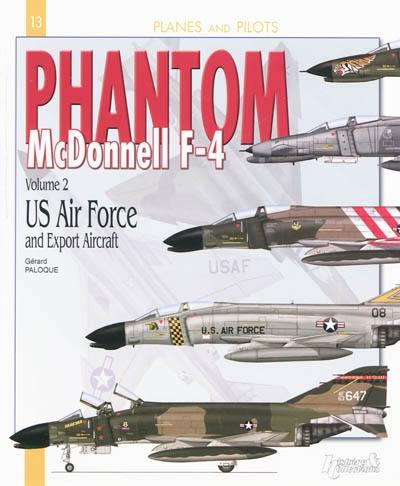
Serie : McDonnell F-4 Phantom. Vol 2
Collection(s) : Planes and pilots
Paru le 15/02/2010 | Broché 82 pages
Public motivé
traduit du français par Alan Mckay
Planes and pilots. The F-4 Phantom II
Volume 2. Us Air Force and Export Aircraft
Shortly after the US Navy put the F-4H-1 Phantom II into service in 1960, the US Air Force in turn took an interest in it. After a successful comparison with the best machines of the period, it was decided at the beginning of 1962 to use it as the standard tactical fighter and recce aircraft under the designations F-110A and RF-110A « Spectre ». In the meantime the designation system for American planes was changed and all the planes were renamed F-4 with only the suffix showing the version and the user. It was in May 1963 that the first USAF F-4C, overall similar to the Navy version, made its first flight and exceeded Mach 2.
Several versions and variants of the twin-engined fighter were produced over almost ten years, taking advantage each time of the progress made in avionics, powerplants and armament, with the original « all-missile » concept being eventually put aside in the light of the fighting in South-East Asia in which the aircraft took an active part, in exchange for an on-board weapon which turned out to be very effective both in the aerial combat and ground attack roles.
Apart from the USAF and the various units of the Air National Guard or the United States Reserve which used the 2 600 F-4s delivered up to the middle of the 90s, especially for recce or electronic warfare, the Phantom IIs were also very successful in the export markets since more than 1 200 examples were flown by ten or so countries, especially NATO ones. Some of them like Japan even built them under licence in large numbers and many, like Israel and Iran, used them in combat often successfully.